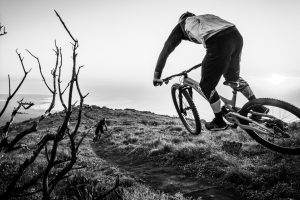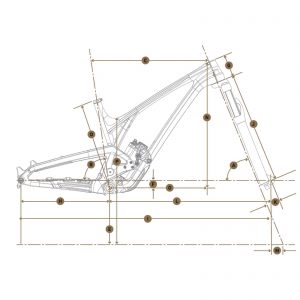SZYBKA WYSYŁKA
Pracujemy na pełnych obrotach
PEŁNY PRZEGLĄD
spawdzamy każdy rower przed wysyłką
ZAPYTANIA
Witaj w Bike Builders!
Rowery enduro i rowery trail zbudowane pod ciebie
Szukasz dobrego roweru z segmentu trail lub enduro? Trafiłeś we właściwe miejsce! Znalezienie idealnego roweru nie jest łatwe, zwłaszcza, że każdy z nas oczekuje czegoś innego. Bike Builders to grupa zajawkowiczów, którzy znają rowery trail i rowery enduro na wylot, więc pomogą Ci znaleźć sprzęt dopasowany do potrzeb i stylu jazdy w ramach określonego budżetu. W swojej ofercie posiadamy sprzęt w oryginalnej specyfikacji producenta. Możemy również zbudować Twój wymarzony custom od podstaw, z części, które sam wybierzesz w naszym sklepie. Widzimy się na trasie!
Jakie rowery enduro i trail Cię interesują?
Szukasz części? W Bike Builders mamy najlepsze!
Nowości, Warsztat & Lifestyle
LIMITOWANA EDYCJA RAM NUKEPROOF
Damper sprężynowy czy powietrzny? Czy to na szlaku, w rowach czy forach, debata o najlepszy damper trwa od wielu lat. Każdy wybór ma swoje mocne

Evil Chamois Hagar
Evil Chamois Hagar – karbonowy gravel, który nie zna kompromisów. Kąt główki 66.67, regulowana sztyca, oś tylna 142×12 oraz wiele innych zalet czyni go wyjątkowym w swej klasie.

Evil Following
Evil Bikes modelem Following udowodniał wartość swojej marki, i nadal to robi rowerem XC służącym do sprawnego podjeżdżania, którym wciąż da się dobrze bawić na zjazdach. W towarzystwie Followinga możesz dać popalić niejednemu zawodnikowi enduro i to na rowerze o relatywnie niedużym skoku.

Evil Insurgent
Evil Insurgent jest niesamowicie wszechstronnym rowerem enduro, nie można go porównać do żadnego innego roweru na rynku, bo żaden nie oferuje takich rozwiązań jak on

Evil Wreckoning V3
Evil Wreckoning V3 rower Enduro z zacięciem DH który spełni wymagania każego fana Enduro MTB

Rama trail i rama enduro – przegląd najciekawszych modeli
Wybór odpowiedniej ramy do roweru to jedno z cięższych zadań, z którym musisz się zmierzyć podczas zakupu wymarzonej maszyny. To właśnie od tej decyzji zależeć
Sprawdź co inni myślą o naszym garażu
Musisz połączyć swoją firmę (google)!